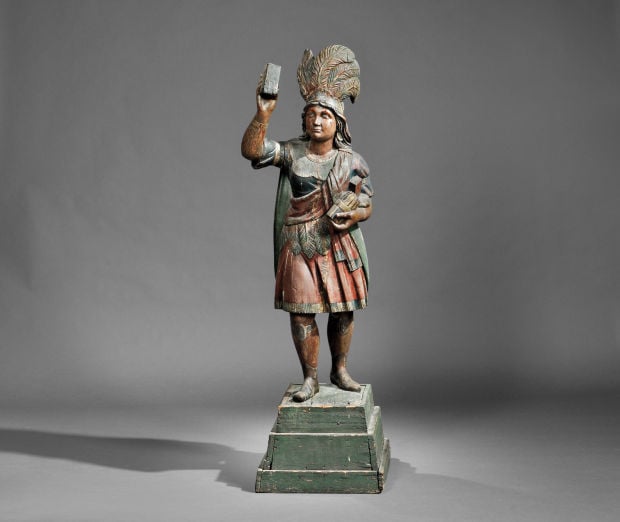Q: My sisters and I inherited our father's Boehm birds. This is a large collection of about 70 pieces, including the Golden Pheasant and a pair of song sparrows. Is there a market for them? We want to sell.
A: To clue readers, Edward Marshall Boehm (1913-1969) was a prolific American sculptor whose studio produced a series of porcelain tabletop figures of birds and wildlife.
His wife, Helen, was a master marketer and through her push, custom Boehm pieces became publicized gifts to foreign dignitaries. That, of course, elevated the status of Boehm in the mass market.
The 1950s and '60s were the heyday of collecting Boehm wildlife and bird figures. I suspect that's when the writer's father built his collection.
But time has not been kind to the overall secondary market for Boehm. These days, collectors pick and choose.
Here's an example: In 1969, a pair of Boehm song sparrows sold at what is now Sotheby's New York for $50,000. In 2007, a pair brought $24,000 in a southern auction. In 2010, at a Dallas auction, a pair sold for just $4,750. None of those results is shabby, but the market decline is illustrative.
Boehm made all sorts of variants on species, and I'm not sure the reader's sparrows are the same as the auction examples. It matters. A pair of Boehm's ring-neck pheasants sold at auction in 2013 for $150. We found Boehm's highly colored Golden Oriental pheasant offered online for $17,000. You can see that exact ID matters. A lot.
Assuming that your father did, indeed, acquire the highly colored Oriental pheasant 21 in. long, made in 1954-56, it's vital to pick the proper way to sell.
Since the reader and his sisters are new to Boehm and selling such items, I suggest they shop the collection to a regional auction house known for selling better decorative goods. Look on the free site www.liveauctioneers.com to see which sellers had the most successful results. Concentrate on recent sales. Then shop the collection to the top three or four.
If other figures are on par with the Oriental pheasant (or even close), the best way to sell is to consign the entire collection to auction. Top pieces bring attention to the lesser.
You can always place reserve prices, and buyers like to see that the aggregate came from a discerning collector. Letting potential buyers see the entirety shows them the quality involved.
Outstanding examples also give the house a way to promote the collection and attract buyers. As with any large collection, expect some items to be stars and some to not sell.
With this kind of collection, selling piecemeal online is not a smart idea unless you really know what you're doing.
Since most auctions sell both online and in house simultaneously, you hit all bases at once, plus you get a worldwide pool of motivated buyers. It's a win-win situation.
Q: I'm trying to determine value on a 1906 painting by Indiana artist Wayman Adams (1883-1959). How do I start?
A: If you refer to "Portrait of Mrs. Frank B. Wynn," the signed 36.5 in. x 30.5 in. oil on canvas of a seated woman in a blue dress sold below estimate at auction on July 12, 2014 for $615. There are no other sales records for Adams.
If your query is sincere, start with an Internet search on the artist. If that comes up empty, try Google for Indiana artists. Also hit sites that list artist names. That's how you start research.





